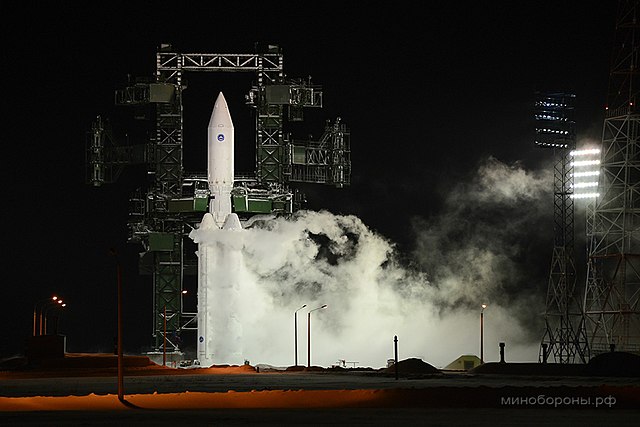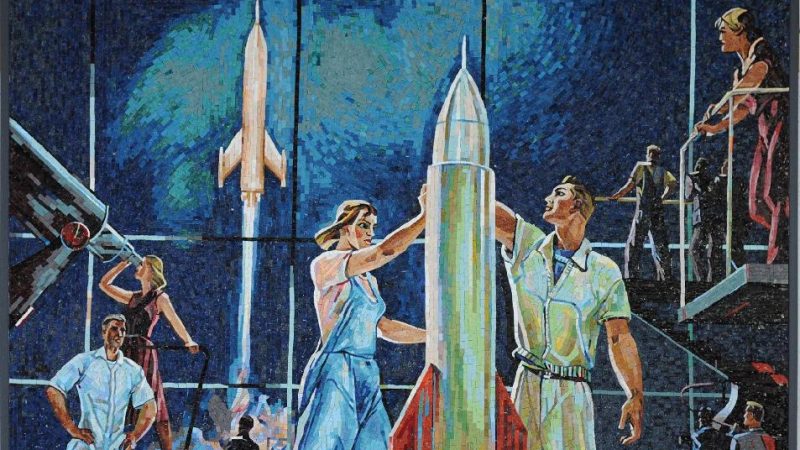The unique heavy lift launch vehicle will be able to launch up to 37 tons of cargo into orbit
On April 11, a day before Cosmonautics Day in Russia, Angara-A5 heavy-lift launch vehicle with Orion upper stage was successfully launched from the new Vostochny Cosmodrome in the Far East.
This was the third attempt to launch the Angara-A5. The first two – on April 9 and 10 – were canceled by automatic control system a few seconds before takeoff.
On April 9, according to Yuri Borisov, head of Roscosmos, the command “cancel launch” was given because of a problem with the supercharging system of the oxidizer tank of the central block. He noted that in such cases, fuel is drained.
On April 10, a second attempt to launch the rocket was made, but a few minutes before liftoff, the launch was again canceled. This time, Borisov said that a new technical problem had been discovered. After analyzing telemetry data, it was determined that the cause of the cancellation was a failure in the engine start control system. Borisov called launch cancellations for technical reasons “normal situation.”
Finally, on April 11, the heavy-lift launch vehicle took off without malfunction; the entire flight from start to finish was normal. 3.5 minutes after launch, the first stage separated, 5.5 minutes later – the second. At 5 minutes and 39 seconds, the payload fairing was successfully jettisoned. And 12.5 minutes after liftoff, the upper stage with the Orion payload separated from the rocket.
Roscosmos reported that the Orion upper stage put into target orbit the Gagarinets small spacecraft, named after Yuri Gagarin and launched into space in the year of the 90th anniversary of the famous Soviet cosmonaut.
Anton Ossovsky, founder of Avant Space, the company that created Gagarinets, said the new spacecraft is part of the Angara-A5 launch vehicle’s test payload.
“2013 seconds after the launch, our spacecraft separates, and then it establishes contact over Crimea. This launch from Vostochny is a big event for the whole country and a huge step for us. There is everything here for the first time – the launch pad, the upper stage, the separation system and us,” he said.
Active testing went on for three days. Yuri Borisov spoke about the difficulties of the team’s work, “It was a hard three days for us, because this is not a TV show or the launching of festive fireworks. This is routine, hard work.”
He said that the flight development tests are designed to identify all the flaws, nuances and ensure reliability in future serial launches of Angara.
According to him, this is only the fourth launch of heavy Angara in ten years, “The rocket has not yet reached the required level of readiness, it is a natural process. This is a new spaceport and a completely new, automatic launch. We still have a lot of work to do with this launch vehicle to ensure its reliability.”
He also said that according to the plan, Angara-A5 will launch a manned spacecraft in 2028.

mil.ru
Experts’ opinions on the importance of Angara-A5 for Russia
The specificity of Angara-A5 is that this heavy-lift launch vehicle will be able to launch cargo weighing up to 37 tons into orbit after the completion of tests.
Science journalist Mikhail Kotov explained that the rocket has not yet completed the stage of flight design tests, so postponements and automatic cancelations are the norm. He emphasized that canceling the launch is preferable to an accident, which could result in the loss of the launch vehicle.
Anatoly Petrukovich, director of the Space Research Institute of the Russian Academy of Sciences, said the new rocket is a key element in the future of the Russian space program, with its ability to carry a large payload.
He stressed that Angara’s most important significance is its ability to launch more than 20 tons into low-Earth orbit, corresponding to the approximate weight of one block of the Russian Orbital Service Station or ISS or the mass of a spacecraft for deep space exploration.
According to Petrukovich, Angara will be used, among other things, to deliver the Spektr-UV ultraviolet telescope and deliver lunar soil to Earth.
Space popularizer and blogger Vitaliy Yegorov explained the significance of this launch with communication issues, “Heavy launch vehicles provide access to the geostationary orbit. And this orbit is extremely important for communication. And, for example, Roscosmos has the Sfera project. Within its framework, it is supposed to launch geostationary spacecrafts, which will provide communication throughout the country.”
Yegorov also noted that the Ministry of Communications, the Hydrometeorological Center, and the military need to launch heavy satellites.
Another important feature of the new launch vehicle is its environmental friendliness; it flies on fuel that does not pollute the environment and space, said former State Duma deputy Yelena Panina.
She also added that the heavy launch vehicles created in the USSR could only be launched from the Baikonur Cosmodrome, which is now located in Kazakhstan, outside Russia.
In addition, an important achievement in the current conditions was the use of only Russian-made parts and components in the creation of the launch vehicle. Now Russia does not depend on the presence or absence of foreign components to deliver heavy spacecraft to different orbits or to the Moon.
There is an opinion that the Angara launch also has military purposes. Russian analyst Yuri Baranchik expressed the view that the launch vehicle “put into space a killer of satellites – the Zevs apparatus.” So now “Americans will have to think carefully about whether to fulfill their and Ukrainian wishes or not. For a satellite is an expensive thing. And if we shoot down not one-to-one, but five or ten-to-one jets that attack our territory, we will not have enough satellites. And what else can “Zevs”? This is a great mystery.”
Baranchyk notes that now it will be “more difficult for the USA to play a double game in space: on the one hand, they are supposedly in favor of cooperation, on the other hand, they use satellites to guide Ukrainian planes and UAVs to targets in Russia (airfields, oil refineries, etc.)”
However, according to official data, the Zevs nuclear tugboat will be ready tentatively by 2030. Borisov claims that Russia will be able to develop and deliver a nuclear unit into space no earlier than six years from now. And such vehicles can indeed be launched using Angara.
On April 12, the head of the Ministry of Industry and Trade Denis Manturov said that the first launch of the new Russian light rocket Start-1M is planned for 2026. He revealed, “Ultralight disposable rockets are currently being developed in the interests of both the Defense Ministry and Roscosmos.”
Now Russia, with a big lag, is in third place after the United States and China on the main space indicator – the number of rocket launches per year. In 2023, we launched 19 rockets, while the US launched 109 rockets and China had 66 successful launches.
The USA broke the Soviet Union’s record of 108 rockets into space in 1982. Meanwhile, NASA launched 19 rockets, and Elon Musk’s SpaseX company launched the rest. Russia does virtually no commercial launches, limiting itself to government programs.
The launch of a domestically built rocket made entirely of Russian parts is undoubtedly an important step toward returning Russia to the title of the first spacefaring nation, as the Soviet Union was.
This is a translation of the article by Yelena Kovalyova and Veronika Strodumova first published on the Rossa Primavera News Agency website




